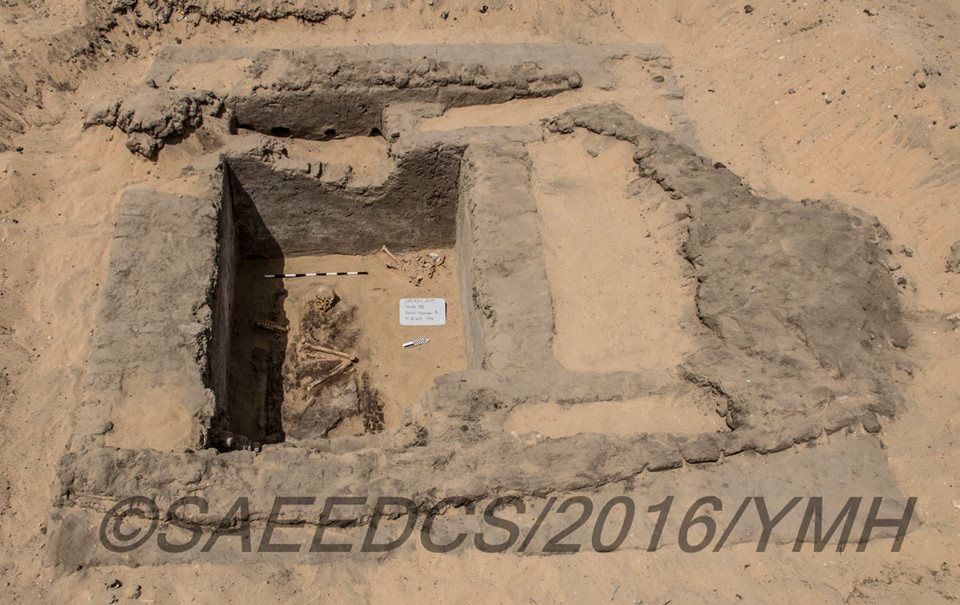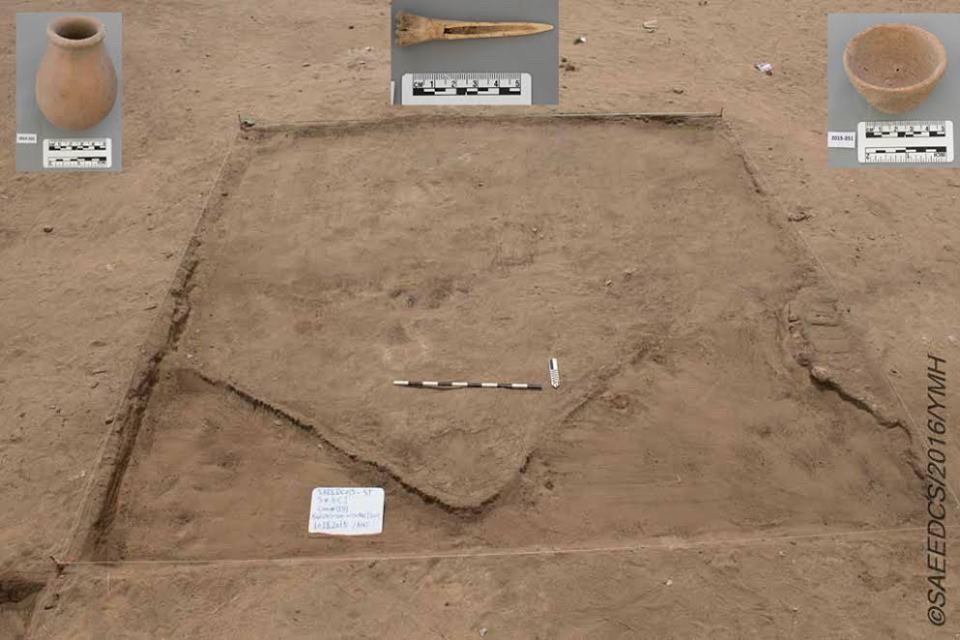Remains of 5,000-Year-Old Egyptian City Unearthed

The remains of a 5,000-year-old city, including a cemetery and several houses, have been unearthed at the site of Abydos in Egypt.
The city, whose size is not clear, dates to the early dynastic period when the first pharaohs ruled a united Egypt, said Mahmoud Afifi, the head of Ancient Egyptian Antiquities at the Egyptian Ministry of Antiquities, in an Arabic language statement.

Photos released on Thursday (Nov. 24) by the ministry show the remains of buildings made of mud bricks and organic materials that are now mostly decayed, along with pottery and stone tools found inside the structures. In addition, a necropolis (cemetery) holding at least 15 burials was found near the city, according to the ministry statement. The remains of a person lying in a fetal position were found in one of the now-exposed graves, according to the released images, which also show a structure nearby that would have covered the burial in ancient times. [Photos: Ancient Egyptian Tomb with Pyramid Discovered at Abydos]

Although the people buried in this cemetery were probably not pharaohs, many early rulers of Egypt were buried at Abydos at sites not far from the city.
For instance, a pharaoh named Aha, who ruled Abydos more than 5,000 years ago, built an elaborate complex that included tombs for servants, dwarfs (who may have served as entertainers) and animals, including lions and dogs. Aha's tomb was discovered more than a century ago, and archaeologists believe that some or all of the people and animals buried with Aha may have been sacrificed after the pharaoh's death so that they could be buried with him.
Many news outlets suggested the city was 7,000 years old, an error that may have resulted from mistranslating the Arabic language release. The ministry, which now uses a Facebook page to issue news releases and video, did not release an English language statement. The ministry used to be able to issue news releases in both Arabic and English and had a staff member who could respond to reporter inquiries. The ministry's increasingly limited ability to communicate with media, particularly English language outlets, may have contributed to the confusion that led many media outlets to report that the city is 7,000 years old when it is actually closer to 5,000.
The Egyptian antiquities ministry has been facing a cash crunch for years as the country’s tourism has yet to recover to the levels it enjoyed before the 2011 Egyptian Revolution, according to several experts familiar with the situation.
Sign up for the Live Science daily newsletter now
Get the world’s most fascinating discoveries delivered straight to your inbox.
Original article on Live Science.

Owen Jarus is a regular contributor to Live Science who writes about archaeology and humans' past. He has also written for The Independent (UK), The Canadian Press (CP) and The Associated Press (AP), among others. Owen has a bachelor of arts degree from the University of Toronto and a journalism degree from Ryerson University.









